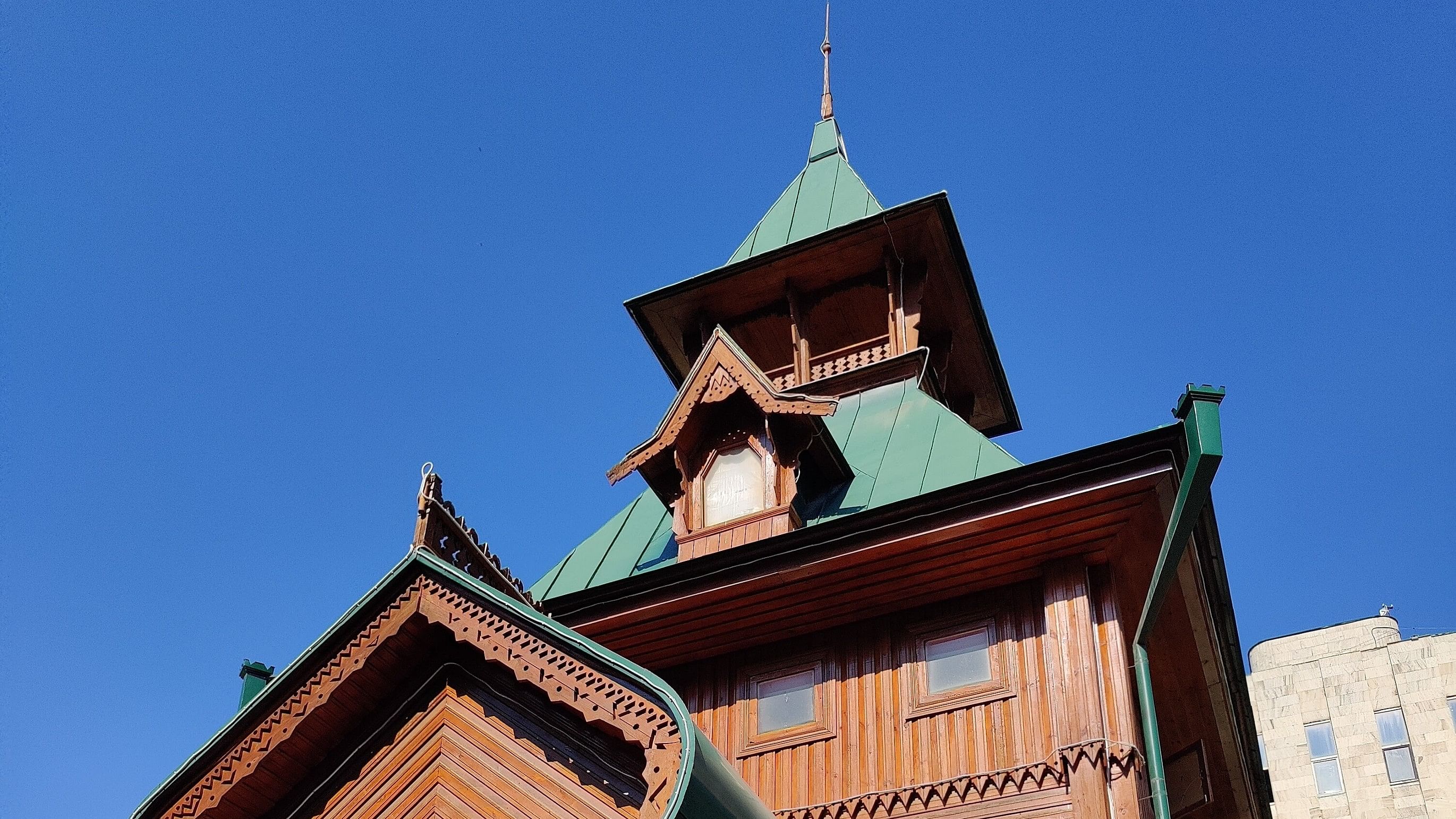
The front facade of the museum in Almaty.
Picture by author.
The velvety sounds of the Dombra, a pear-shaped string instrument, take me back to Kazakhstan, the largest landlocked country in the world. Kazakh folk music has a rich history and dates back to the ninth century. “In a largely oral culture where there were no written sources, music was a crucial means of communication for the nomadic Kazakh people,” says Viktoriya, our local guide in Almaty, the largest city in the country.
Legends, fairy tales and epics were narrated through music. Musical instruments were not only for entertainment but were also an essential part of shamanistic rituals and cults. Many of the musical instruments were fashioned out of what was locally available — from juniper and birch wood to leather, horse hair and goat bones.
A great window into Kazakhstan’s folk musical heritage is the Museum of Folk Instruments in Almaty, housed in a beautiful wooden building from 1908, with carved pillars and a porch, which was once a meeting place for army officers. The museum has more than 1,000 instruments in its collection.
In the hall of ancient musical instruments, there is on display the Saz Syrnai, a wind instrument made of clay mixed with wool, which was discovered in the ancient city of Otrar in 1220. They say that the sound of this instrument recreated the howling of the wind and was popular with young children. One of the oldest instruments in the museum is a 300-year-old Narkobyz, a Kazakh bow instrument, which according to legend, used to be buried along with the shaman, and music would start rising from the grave.
We see the Zhetygen, an ancient seven-stringed instrument with an oblong box, which resembles a harp. Under the strings are small pieces of bone which act as pegs and by moving them around, one could adjust the sound and pitch. Today, it’s used in modern folk orchestras.
Viktoriya shows us how to play the Jew’s harp, also called the Shankauyz, a tongue folk instrument, a small piece of metal that can be carried around in your bag, and was once popular with women. The instrument has to be played by the mouth; the thin metal vibrates with the help of the tongue, while the oral cavity acts as the resonator.
The Dombra is the main string instrument of the Kazakh people and a quintessential part of its musical traditions — with its pear-shaped frame which is carved and long neck with frets. They say that the sound of the Dombra made Genghis Khan weep! The melodious sound of the Dombra is what we hear across the country — in the Hun Ethno village near Almaty and in the lobby of our hotel at Karavansaray in Turkestan. I hear about the Kui, a distinctive musical genre born between the 15th and 18th centuries in Kazakhstan and unique to the region, which is performed on the Dombra and is almost spiritual in nature and many call it the ‘whisper of god’.
On display is Kobyz, another ancient instrument bent like a bucket, which was used by shaman healers and it was believed that the music could cure illnesses and banish evil spirits. Carved from a single piece of wood, either juniper or birch, it had two strings made from horsehair. The cavity was usually covered with goat or camel leather and mirrors were stuck inside the body to increase the mystique. The sounds of the Kobyz resembled the voices of animals; from the howling of wolves to the sounds of a running horse.
There is also the flute called Sybzygy, a wind instrument that helped the shepherds living in solitude in remote grasslands. It was just a simple hollow reed on which three holes were cut. But it was extremely difficult to play. It could be heard on pastures, at weddings and at the birth of a child.
I love the special instrument that is used in Orteke, an indigenous Kazakh performing art that combines theatre, music and puppetry and is on the UNESCO list of Intangible heritage. This folk art entails a music performance with a Dombra and a dance performed by a wooden puppet attached to a traditional drum.
Today Kazakh folk music has been given a modern twist, with rock bands and metal bands marrying the sounds of folk instruments like the Dombra with heavier tones. Even in its modern form, Kazakh folk music continues to stir the souls of people, with its spiritual and almost meditative quality.